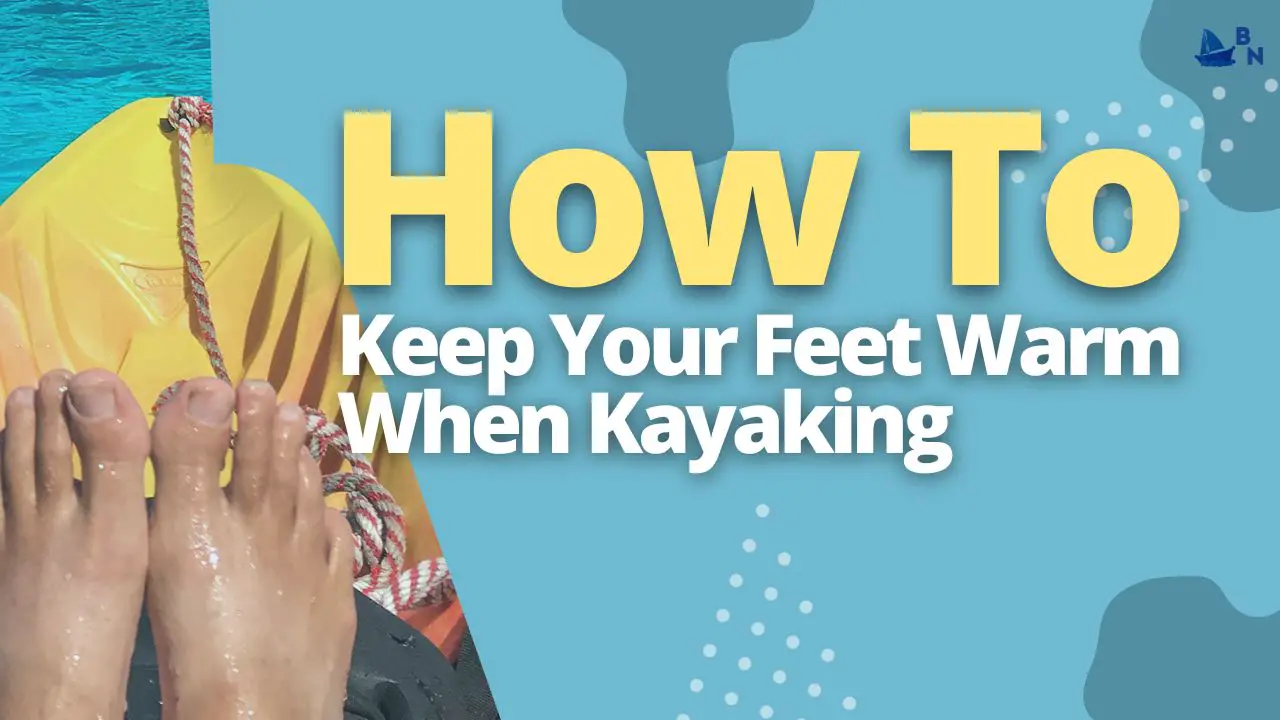There are a few things you can do to keep your feet warm when kayaking. Make sure you have a good pair of socks that will wick away moisture and keep your feet dry. Wear a pair of shoes or booties that fit well and won’t let water in. Consider wearing a pair of neoprene socks or booties for extra warmth. Always bring along a spare set of dry socks to change into if your feet get wet.
If you’re looking for ways to keep your feet warm when kayaking, read for some helpful tips.
Key Takeaway’s
- Get a good pair of neoprene socks: they will insulate your feet from the cold water and prevent chafing from your shoes.
- Wear a drysuit: this will keep your entire body dry, which will, in turn, keep you much warmer.
- Bring a hot water bottle: Fill it up with hot water before you head out and put it in the footwell of your kayak. This will help to keep your feet warm throughout the day.
- Paddle regularly: Paddling helps keep your body temperature up and gets your blood flowing, which will help keep your feet warm.
- Dress in layers: Wearing multiple layers of clothing will trap heat and help to keep you warm, even if one layer gets wet.
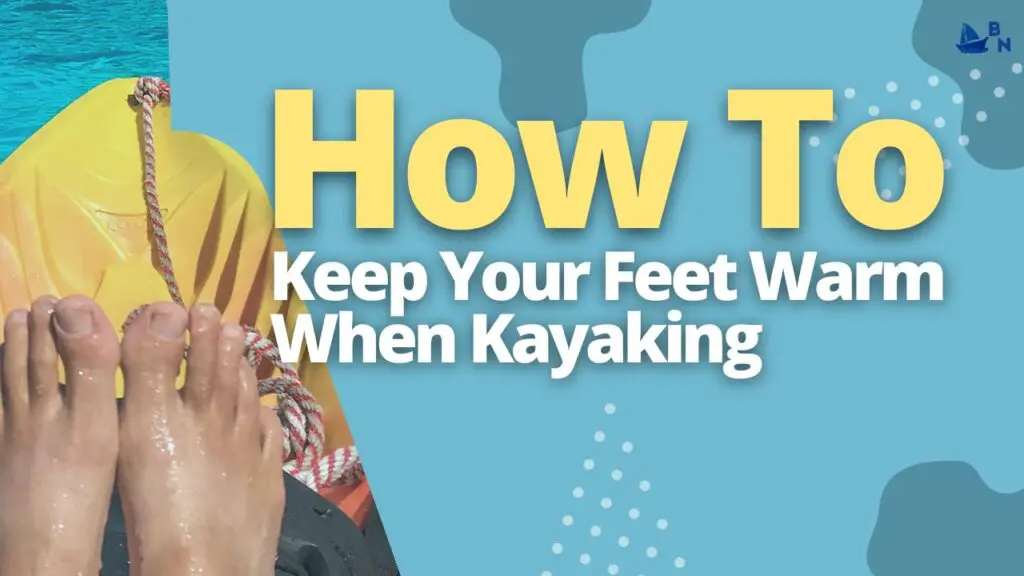
Here’s The Answer To How To Keep Your Feet Warm When Kayaking
Wear the right socks: The first step to keeping your feet warm is to wear the right socks. Wool or synthetic wool socks are best because they insulate even when wet. Avoid cotton socks, which will only make your feet colder.
Wear a dry suit: If you want to keep your feet warm, invest in a dry suit. A dry suit is a waterproof suit that covers your entire body and seals at the neck and wrists. While it may not be the most comfortable thing to paddle in, it will keep you completely dry—and, therefore, much warmer than if you wore a wetsuit or other clothing.
Bring hand and foot warmers: In addition to dressing properly, you can also bring hand and foot warmers with you on your kayaking trip. You activate these small packets by opening them up and exposing them to air. Once activated, they give off heat for several hours—perfect for sticking in your gloves or boots to keep your extremities warm.
Get A Good Pair Of Neoprene Socks
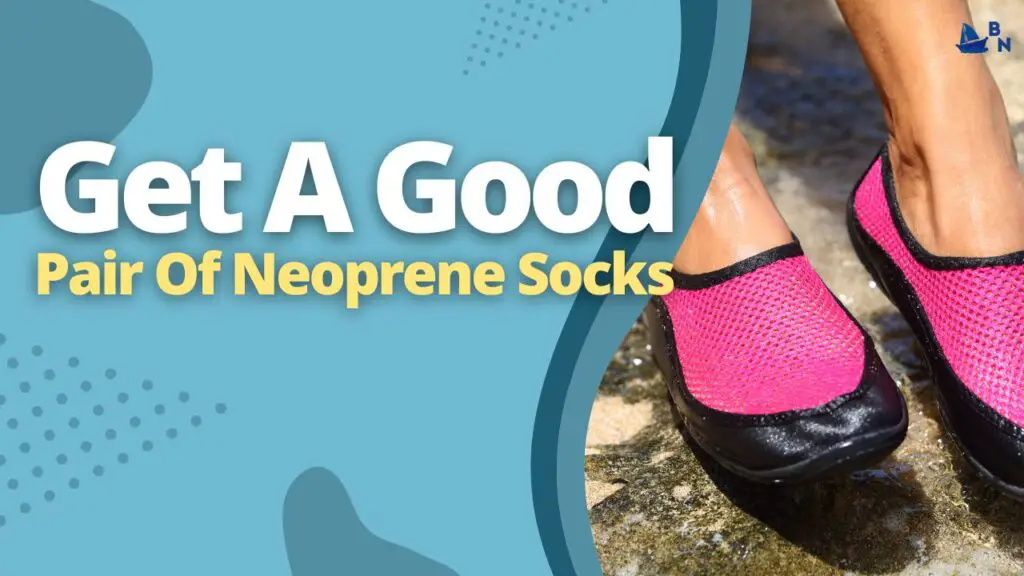
Get a good pair of neoprene socks if you’re serious about keeping your feet warm. Check the thickness by looking at the label on the back of the sock or asking someone in-store if they know their thickness.
If it doesn’t say anything, contact them and ask what their product is made with.
For example, 3Mm would be suitable for most people, but 5Mm might be better if you have circulation issues or any other medical conditions that make it difficult for you to keep warm in cold weather.
Be warned: while neoprene is not toxic (even though it’s used in wetsuits), it can produce an odor after prolonged use so try not to wear these all day long unless necessary!
Wear A Drysuit
The best way to keep your feet warm while kayaking is with a dry suit. A dry suit is made of waterproof fabric, so there’s no need to worry about getting wet when you fall in.
It also has insulation, which keeps you warm even during cold weather. Drysuits are easy to wear and take off—you just zip them up.
Using a drysuit means you can paddle outside in any weather, not just when it’s warm. And did we mention they’re stylish?
Invest In Some Booties
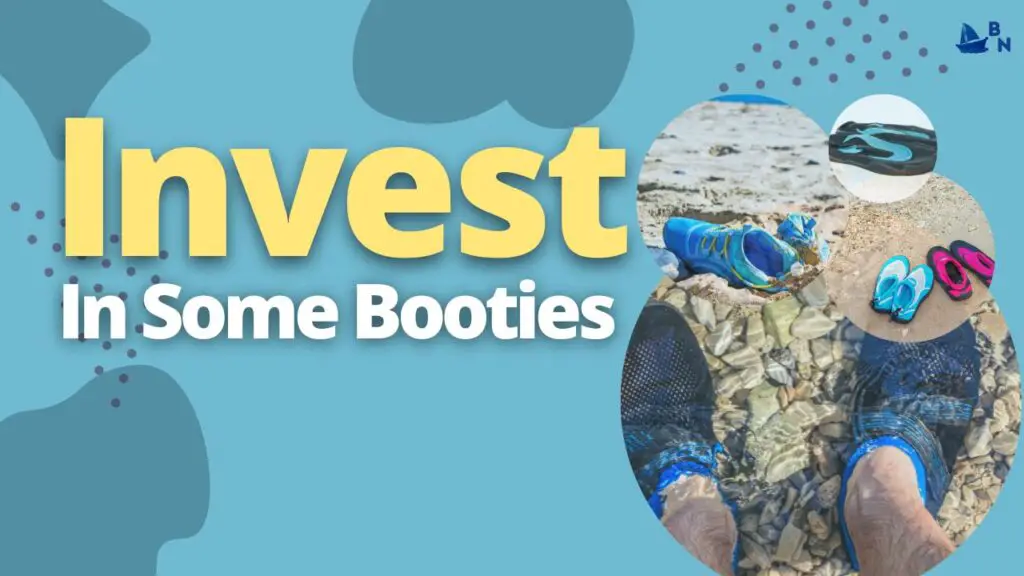
A good pair of booties can distinguish between a cold, wet ride and a comfortable one.
Booties are like gloves for your feet and are generally made of synthetic materials such as neoprene or nylon that trap body heat, making them a great way to keep your feet warm on the water.
Some people even wear them over their boots, which is helpful if you want to protect your feet from sharp objects like rocks or submerged logs (or if you’re just trying not to fall overboard).
Use Toe Warmers
Toe warmers are small packets you can put inside your shoes to help keep your toes warm.
They’re also called foot warmers or hand warmers, and they work by using little balls of chemical material that generate heat when they react with air.
It’s like hot chocolate in a foil cup; it won’t be as good as the real thing, but it will give you something to feel good about while you drink actual hot chocolate.
Keep Moving
It is recommended that you keep moving as much as possible when kayaking. It’s important to keep your muscles warm and active, so don’t sit still for too long.
Don’t stop paddling, and don’t stop moving your feet; if you’re feeling extra cold, put on gloves or a hat.
How Can You Prevent Cold Feet While Kayaking?
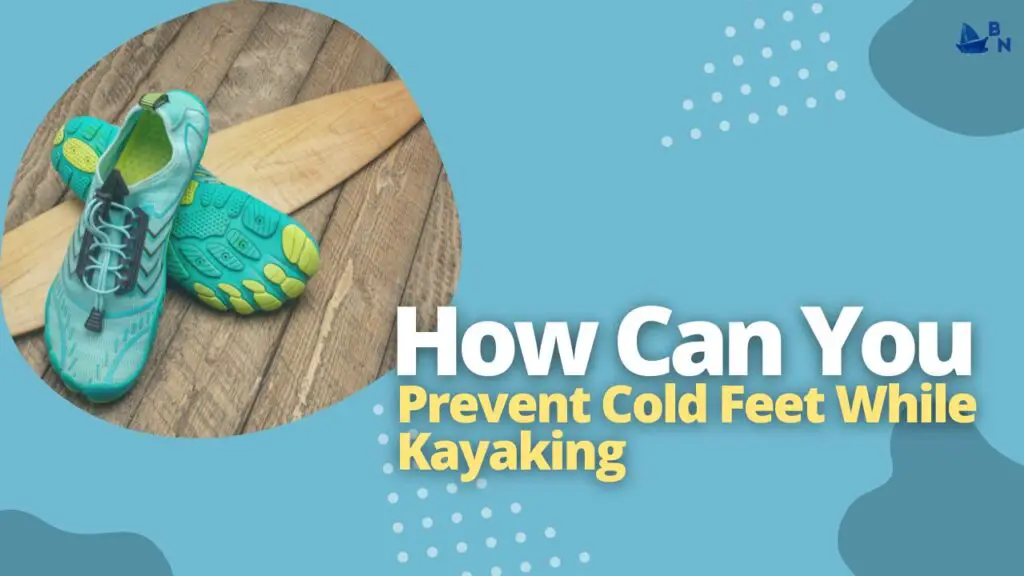
If you find yourself getting cold feet while kayaking, it’s probably because your body is not warm enough.
To combat this, try the following:
- Keep moving. If your body is moving and working, it will stay warm. Stay active while in the water by paddling vigorously and working on balance exercises with one leg behind you or both legs crossed under a footrest.
- Wear warm socks that help keep your feet insulated from the cold water of icy lakes and rivers. Make sure they are also dry, so they do not get wet from sweat or river water!
- Wear a drysuit when kayaking during winter so that your core temperature doesn’t drop too low due to exposure to the elements (windchill effect). This may also help prevent muscle cramps caused by trying too hard to keep warm.
What Are Some Treatments For Cold Feet While Kayaking?
Before you leave, warm up your feet. The best way to do this is by practicing your stroke and doing a few warm-up laps around the lake.
If you are somewhere that doesn’t have access to a body of water, then consider using a foam roller for some self-massage or walking on grass barefoot as an alternative.
Avoid wearing wet socks or shoes after paddling as much as possible because they will chill and numb your toes once you get home.
Make sure you change into dry socks before doing anything else after kayaking.
What Are Some Tips For Keeping Your Feet Warm While Kayaking?
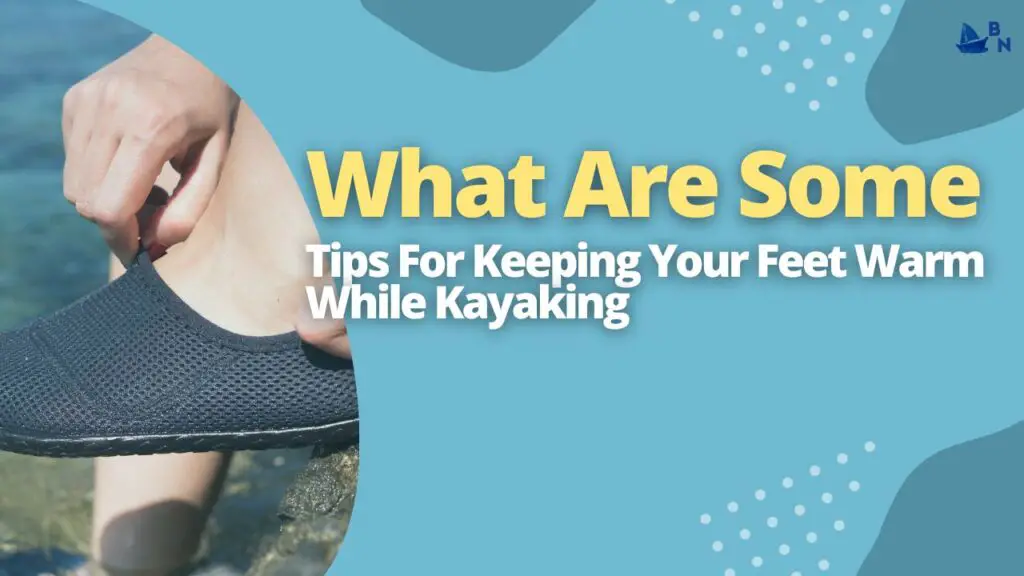
You can do many things to keep your feet warm while kayaking. First and foremost, wear a dry suit. This is the most effective way to keep your feet warm.
Drysuits are made of a fabric impervious to water, so they won’t let in any cold water or wind.
They also come with neoprene socks, which provide extra warmth without taking up too much room in your kayak or making it harder for you to paddle.
If you don’t have access to a drysuit (or if using one just doesn’t sound like something that would fit into your budget), there are still other options available that will help keep those toes nice and cozy on chilly days out on the water:
- Use toe warmers! These little packets can be placed under wet socks or inside shoes before taking off on an adventure with friends who enjoy hiking through snowy forests during winter.
In Short
Suppose you’re interested in learning how to warm your feet when kayaking. Read on for some tips. Some basic things you can do include wearing socks and keeping your feet dry.
You can also invest in a pair of neoprene booties or put hand warmers in your shoes. If you follow these tips, you’ll be able to stay nice and cozy on your next kayaking trip.

